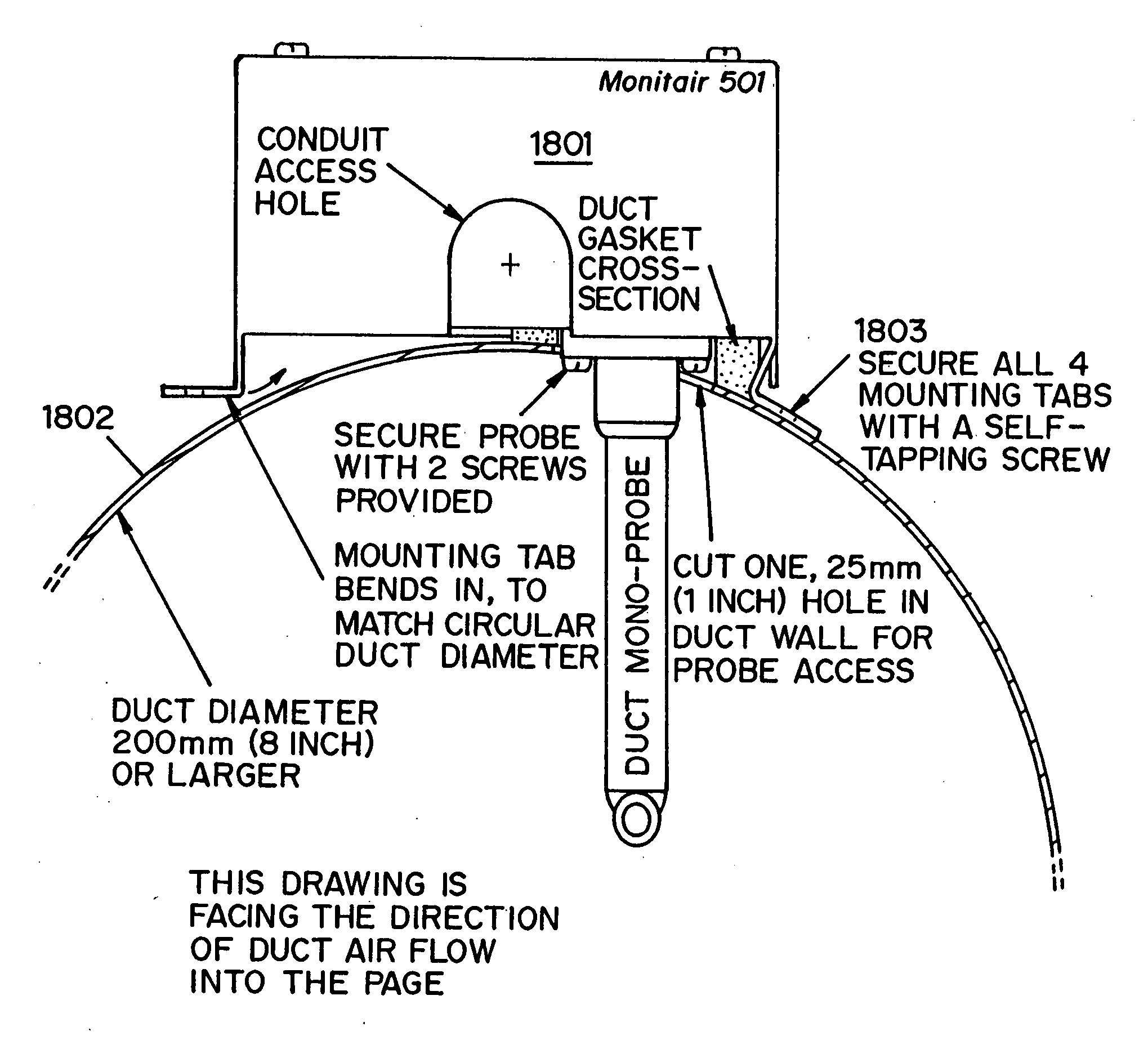Particle monitors and method(s) therefor
a particle monitor and particle technology, applied in the direction of fire alarms, liquid/fluent solid measurement, fluid speed measurement using thermal variables, etc., can solve the problem of reducing the detection accuracy of detectors, and producing a large number of very small solid particles
- Summary
- Abstract
- Description
- Claims
- Application Information
AI Technical Summary
Benefits of technology
Problems solved by technology
Method used
Image
Examples
Embodiment Construction
[0058] In the embodiment described, at least two channels are referred to, one being channel A, which uses wavelengths such as red or infrared wavelengths, the other being channel B, which uses wavelengths such as blue wavelengths. Additional channels could be employed such as channel C, which uses wavelengths such as green wavelengths. Other wavelengths may also be employed in accordance with the present invention, as will become apparent in the following description. Generally, it is preferred if a reading established from a longer wavelength is compared with a reading establish from a shorter wavelength. Most preferably, the longer wavelength is subtracted from the shorter wavelength. A ratio may also be used to compare wavelength readings.
Wavelengths of Light
[0059] In one aspect of invention, it has been determined by the present inventor that the wavelengths of light employed have an important bearing on the sensitivity of the present device to particle sizes. The scattering...
PUM
 Login to View More
Login to View More Abstract
Description
Claims
Application Information
 Login to View More
Login to View More - R&D
- Intellectual Property
- Life Sciences
- Materials
- Tech Scout
- Unparalleled Data Quality
- Higher Quality Content
- 60% Fewer Hallucinations
Browse by: Latest US Patents, China's latest patents, Technical Efficacy Thesaurus, Application Domain, Technology Topic, Popular Technical Reports.
© 2025 PatSnap. All rights reserved.Legal|Privacy policy|Modern Slavery Act Transparency Statement|Sitemap|About US| Contact US: help@patsnap.com



